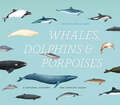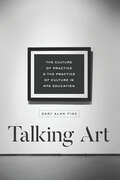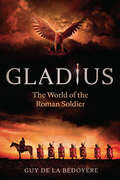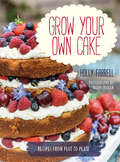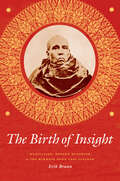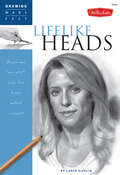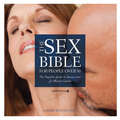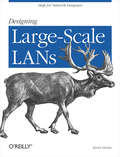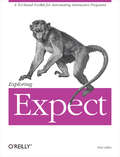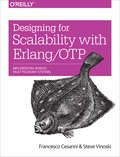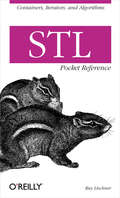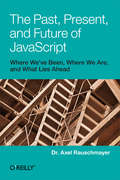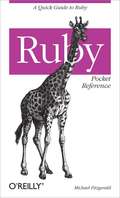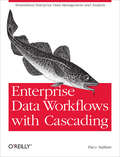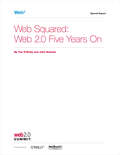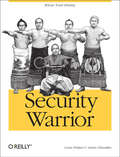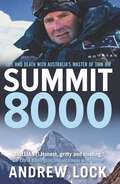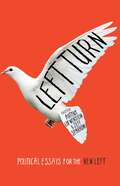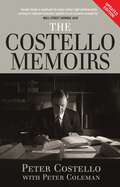- Table View
- List View
Backyard Pharmacy: Growing Medicinal Plants in Your Own Yard
by Elizabeth MillardThis guide to herbal medicines shows you how to transform common plants into healing remedies with techniques that are simple, effective, and low cost.In Backyard Pharmacy, author Elizabeth Millard shares her deep knowledge of what to add to your garden to grow your own medicinal plants to enhance your health.Plants you once believed were just seasonings for sauce in the kitchen or scents for your home are in fact medicines that can help heal and soothe, if you know what to do with them. This book shows you how easy it can be to make your own herbal remedies for life’s common ailments. Profiles of common healing plants offer advice on growing, harvesting, preparing, and using these herbs in healing tinctures, oils, and creams.You’ll find all-natural, low-cost herbal solutions for a range of common ailments, such as: Learn how to grow and craft a poultice to soothe mosquito bites.Make an herbal tincture to fix sluggish digestion. Brew up some lemon balm iced tea to ease a stressful day.Craft echinacea drops to support immune system health.Use elderberry to ease cold and flu symptoms.Blend a cayenne salve to relieve inflammation.Steep chamomile tea to aid with insomnia. From the common cold to a nasty scrape, headache, or digestive issue, simple, all-natural home-grown ingredients can make you feel healthy and happy. With guidance from this useful book, you’ll be able to match properties of each plant to your own medicinal needs.
Whales, Dolphins & Porpoises: A Natural History and Species Guide
by Annalisa BertaThe eighty-nine cetacean species that swim our seas and rivers are as diverse as they are intelligent and elusive, from the hundred-foot-long, two-hundred-ton blue whale to the lesser-known tucuxi, ginkgo-toothed beaked whale, and diminutive, critically endangered vaquita. The huge distances these highly migratory creatures cover and the depths they dive mean we catch only the merest glimpses of their lives as they break the surface of the water. But thanks to the marriage of science and technology, we are now beginning to understand their anatomy, complex social structures, extraordinary communication abilities, and behavioral patterns. In this beautifully illustrated guide, renowned marine mammalogist Annalisa Berta draws on the contributions of a pod of fellow whale biologists to present the most comprehensive, authoritative overview ever published of these remarkable aquatic mammals. Opening with an accessible rundown of cetacean biology—including the most recent science on feeding, mating, and communication—Whales, Dolphins, and Porpoises then presents species-specific natural history on a range of topics, from anatomy and diet to distribution and conservation status. Each entry also includes original drawings of the species and its key identifiers, such as fin shape and color, tooth shape, and characteristic markings as they would appear both above and below water—a feature unique to this book. Figures of myth and—as the debate over hunting rages on—figures of conflict since long before the days of Moby-Dick, whales, dolphins, and porpoises are also ecologically important and, in many cases, threatened. Written for general enthusiasts, emergent cetacean fans, and biologists alike, this stunning, urgently needed book will serve as the definitive guide for years to come.
The Market and Other Orders (The\collected Works Of F. A. Hayek Ser. #Vol. 15)
by F. A. HayekIn addition to his groundbreaking contributions to pure economic theory, F. A. Hayek also closely examined the ways in which the knowledge of many individual market participants could culminate in an overall order of economic activity. His attempts to come to terms with the “knowledge problem” thread through his career and comprise the writings collected in the fifteenth volume of the University of Chicago Press’s Collected Works of F. A. Hayek series.The Market and Other Orders brings together more than twenty works spanning almost forty years that consider this question. Consisting of speeches, essays, and lectures, including Hayek’s 1974 Nobel lecture, “The Pretense of Knowledge,” the works in this volume draw on a broad range of perspectives, including the philosophy of science, the physiology of the brain, legal theory, and political philosophy. Taking readers from Hayek’s early development of the idea of spontaneous order in economics through his integration of this insight into political theory and other disciplines, the book culminates with Hayek’s integration of his work on these topics into an overarching social theory that accounts for spontaneous order in the variety of complex systems that Hayek studied throughout his career. Edited by renowned Hayek scholar Bruce Caldwell, who also contributes a masterly introduction that provides biographical and historical context, The Market and Other Orders forms the definitive compilation of Hayek’s work on spontaneous order.
A Yorkshire Miscellany
by Tom HolmanFrom Yorkshire Day to terriers, pudding, and more—discover fascinating facts about this storied corner of England with this treasure trove of trivia.Do you know what a Yorkshire Fat Rascal is? Where to find the Land of Nod? Which three Prime Ministers were born in Yorkshire? Or who Yorkshire’s real Calendar Girls are? The answers are all in A Yorkshire Miscellany—an entertaining guide to this much-loved part of England and a celebration of its people, places, history and quirks.Learn the lingo of Yorkshire dialect and how to cook specialties like Yorkshire Pudding, Parkin and Curd Tart. Discover the secrets of building a dry stone wall and uncover the Yorkshire locations of famous films and TV shows. Understand the history of famous Yorkshire icons like the flat cap and the Yorkshire terrier, and read about the lives of the greatest ever Yorkshiremen and women.A Yorkshire Miscellany is crammed with intriguing facts and figures—a fascinating treasure trove to delight Yorkshire natives and visitors alike.
Talking Art: The Culture of Practice & the Practice of Culture in MFA Education
by Gary Alan FineIn Talking Art, acclaimed ethnographer Gary Alan Fine gives us an eye-opening look at the contemporary university-based master’s-level art program. Through an in-depth analysis of the practice of the critique and other aspects of the curriculum, Fine reveals how MFA programs have shifted the goal of creating art away from beauty and toward theory. Contemporary visual art, Fine argues, is no longer a calling or a passion—it’s a discipline, with an academic culture that requires its practitioners to be verbally skilled in the presentation of their intentions. Talking Art offers a remarkable and disconcerting view into the crucial role that universities play in creating that culture.
Gladius: The World of the Roman Soldier
by Guy de la BédoyèreThis &“encyclopedic [volume] collects pretty much every fact known about what it was like to be in the military arm of the Roman Empire" (The New York Times Book Review). The Roman army was the greatest fighting machine in the ancient world. It was also the single largest organization in Western antiquity, taking in members from all classes, from senators to freed slaves. The Roman Empire depended on its army not just to win wars, defend its frontiers, and control the seas, but to act as the very engine of the state. In Gladius—the Latin word for sword—Guy De la Bédoyère reveals what it meant to be a soldier in the army that made the empire. Surveying numerous aspects of Roman military life between 264 BCE and 337 CE, De la Bédoyère draws not only on the words of famed Roman historians, but also those of the soldiers themselves, as recorded in their religious dedications, tombstones, and even private letters and graffiti. He vividly recreates their everyday lives, whether in a bleak frontier garrison in Britain or North Africa, guarding the emperor in Rome, fighting on foreign battlefields, mutinying over pay, marching in triumph, throwing their weight around on city streets, or enjoying honorable retirement. By illuminating the history of one organization that reflected all corners of the Roman world, Gladius gives us a portrait of an ancient society that is unprecedented in both its broad sweep and gritty intimacy.
Grow Your Own Cake: Recipes from Plot to Plate
by Holly Farrell“Shows how garden produce—from berries to beetroot—can be used to make delicious cakes, biscuits and tarts . . . plenty of sensible grow-your-own advice.” —Two Thirsty GardenersThe veg plot and fruit garden are the new starting points for the healthiest, best cakes—and with this book you can grow and bake fifty of the tastiest cakes with most of the ingredients not far from your fingertips, all the way from sowing the seeds to cutting the cake. Choose the best baking varieties for each recipe: grow long sweet parsnips to grate into parsnip cake, and short baby parsnips for a tarte-tatin. From blackcurrants for meringues to lavender for shortbread, from sweet potatoes to spinach, cherries to chillies, beetroot to basil, and ginger to garlic, all manner of vegetables, fruit, herbs and flowers can be found in a baker’s kitchen garden.“The photos are delicious, the recipes straightforward and easy to follow. You can pick your cakes by season depending on what fruit or vegetables you have to hand.” —The English Garden“The recipes put interesting vegetables and fruits centre stage and turn old cliches of sweet and savoury upside down.” —The Women’s Room
The Birth of Insight: Meditation, Modern Buddhism & the Burmese Monk Ledi Sayadaw (Buddhism and Modernity)
by Erik BraunInsight meditation, which claims to offer practitioners a chance to escape all suffering by perceiving the true nature of reality, is one of the most popular forms of meditation today. The Theravada Buddhist cultures of South and Southeast Asia often see it as the Buddha’s most important gift to humanity. In the first book to examine how this practice came to play such a dominant—and relatively recent—role in Buddhism, Erik Braun takes readers to Burma, revealing that Burmese Buddhists in the colonial period were pioneers in making insight meditation indispensable to modern Buddhism. Braun focuses on the Burmese monk Ledi Sayadaw, a pivotal architect of modern insight meditation, and explores Ledi’s popularization of the study of crucial Buddhist philosophical texts in the early twentieth century. By promoting the study of such abstruse texts, Braun shows, Ledi was able to standardize and simplify meditation methods and make them widely accessible—in part to protect Buddhism in Burma after the British takeover in 1885. Braun also addresses the question of what really constitutes the “modern” in colonial and postcolonial forms of Buddhism, arguing that the emergence of this type of meditation was caused by precolonial factors in Burmese culture as well as the disruptive forces of the colonial era. Offering a readable narrative of the life and legacy of one of modern Buddhism’s most important figures, The Birth of Insight provides an original account of the development of mass meditation.
Lifelike Heads: Discover Your Inner Artist As You Learn To Draw Portraits In Graphite (Drawing Made Easy)
by Lance RichlinLearn to draw amazingly realistic portraits in seven easy stages—from capturing unique facial features and expressions to different ages and races. This book is the perfect guide for creating lifelike representations of the human head in graphite. Experienced artist Lance Richlin begins by explaining drawing tools and materials, shading techniques, and the important anatomical structures of the head. Following these basics, he shows how to light the subject, block in and render each feature of the face, and address a variety of expressions—from subtle smiles to toothy grins. Then he guides the reader through four impressive projects, showing how to develop a lifelike head drawing in seven simple stages: the lay-in, plumb lines, volume, outline, tonal pattern, value, and finishing. Readers also will find an in-depth troubleshooting section to help them identify and solve any problems that lessen the realism and accuracy of their drawings. In an age full of technological shortcuts, this book emphasizes drawing from life and seeks to preserve the methods of the old masters.
The Sex Bible For People Over 50: The Complete Guide to Sexual Love for Mature Couples
by Laurie BetitoThis essential guide shows readers over fifty how to reconnect with their partners, experiment, handle sex & dating, and more.Sex post-fifty can be the best ever, but it requires a different skill-set—more communication, longer foreplay, different positions, sexual toys and aids—to stay hot and exciting. It also needs to accommodate the myriad of physical, emotional, and social changes that happen in late middle-age.In The Sex Bible for People Over 50, Dr. Laurie Betitoaddresses common physical and sexual issues that 50+ couples encounter, and provides tips and solutions that are fun and exciting, like modified positions or the use of sexual toys and aids. It also shows readers how to build new sexual skills by providing exercises and new ways to enjoy sexual pleasure on their own, and with their partner.
Designing Large Scale Lans: Help for Network Designers
by Kevin DooleyThis unique book offers a vendor-neutral approach for designing large local area networks according to business or organizational needs, rather than from a product perspective. Author and independent network design consultant Kevin Dooley outlines "top-down network design" for building a technological infrastructure to fit your organization's requirements, a process far more effective and cost-efficient than fitting the organization to the parameters of a shrink-wrapped proprietary solution.Dooley argues that the design of a network is largely independent of the products used. Whether you use a Cisco or Juniper router, the same security issues and protocols apply. The questions he addresses in this book are need-specific: Do I use a router or a switch? Should I route between switched areas or switch between routed areas?Designing Large-Scale LANs covers everything from security, bandwidth and scalability to network reliability, which includes backup, redundancy, and points of failure. Specific technologies are analyzed in detail: network topologies, routing and switching strategies, wireless, virtual LANs, firewalls and gateways, security, Internet protocols, bandwidth, and multicast services. The book also discusses proprietary technologies that are ubiquitous, such as Cisco's IOS and Novell's IPX.This complete guide to top-down network design will help you choose the right network solutions. If you're designing large scale networks and need expert advice and guidance, look no further than Designing Large-Scale LANs.
AppleScript: The Missing Manual
by Adam GoldsteinFrom newspapers to NASA, Mac users around the world use AppleScript to automate their daily computing routines. Famed for its similarity to English and its ease of integration with other programs, AppleScript is the perfect programming language for time-squeezed Mac fans. As beginners quickly realize, however, AppleScript has one major shortcoming: it comes without a manual.No more. You don't need a degree in computer science, a fancy system administrator title, or even a pocket protector and pair of nerdy glasses to learn the Mac's most popular scripting language; you just need the proper guide at your side. AppleScript: The Missing Manual is that guide.Brilliantly compiled by author Adam Goldstein, AppleScript: The Missing Manual is brimming with useful examples. You'll learn how to clean up your Desktop with a single click, for example, and how to automatically optimize pictures for a website. Along the way, you ll learn the overall grammar of AppleScript, so you can write your own customized scripts when you feel the need.Naturally, AppleScript: The Missing Manual isn't merely for the uninitiated scripter. While its hands-on approach certainly keeps novices from feeling intimidated, this comprehensive guide is also suited for system administrators, web and graphics professionals, musicians, scientists, mathematicians, engineers, and others who need to learn the ins and outs of AppleScript for their daily work.Thanks to AppleScript: The Missing Manual, the path from consumer to seasoned script has never been clearer. Now you, too, can automate your Macintosh in no time.
Exploring Expect: A Tcl-based Toolkit for Automating Interactive Programs
by Don LibesExpect is quickly becoming a part of every UNIX user's toolbox. It allows you to automate Telnet, FTP, passwd, rlogin, and hundreds of other applications that normally require human interaction. Using Expect to automate these applications will allow you to speed up tasks and, in many cases, solve new problems that you never would have even considered before.For example, you can use Expect to test interactive programs with no changes to their interfaces. Or wrap interactive programs with Motif-like front-ends to control applications by buttons, scrollbars, and other graphic elements with no recompilation of the original programs. You don't even need the source code! Expect works with remote applications, too. Use it to tie together Internet applications including Telnet, Archie, FTP, Gopher, and Mosaic.Don Libes is the creator of Expect as well as the author of this book. In Exploring Expect, he provides a comprehensive tutorial on all of Expect's features, allowing you to put it immediately to work on your problems. In a down-to-earth and humorous style, he provides numerous examples of challenging real-world applications and how they can be automated using Expect to save you time and money.Expect is the first of a new breed of programs based on Tcl, the Tool Command Language that is rocking the computer science community. This book provides an introduction to Tcl and describes how Expect applies Tcl's power to the new field of interaction automation. Whether your interest is in Expect or interaction automation or you simply want to learn about Tcl and see how it has been used in real software, you will find Exploring Expect a treasure trove of easy-to-understand and valuable information.
Designing for Scalability with Erlang/OTP: Implement Robust, Fault-Tolerant Systems
by Francesco Cesarini Steve VinoskiIf you need to build a scalable, fault tolerant system with requirements for high availability, discover why the Erlang/OTP platform stands out for the breadth, depth, and consistency of its features. This hands-on guide demonstrates how to use the Erlang programming language and its OTP framework of reusable libraries, tools, and design principles to develop complex commercial-grade systems that simply cannot fail.In the first part of the book, you’ll learn how to design and implement process behaviors and supervision trees with Erlang/OTP, and bundle them into standalone nodes. The second part addresses reliability, scalability, and high availability in your overall system design. If you’re familiar with Erlang, this book will help you understand the design choices and trade-offs necessary to keep your system running.Explore OTP’s building blocks: the Erlang language, tools and libraries collection, and its abstract principles and design rulesDive into the fundamentals of OTP reusable frameworks: the Erlang process structures OTP uses for behaviorsUnderstand how OTP behaviors support client-server structures, finite state machine patterns, event handling, and runtime/code integrationWrite your own behaviors and special processesUse OTP’s tools, techniques, and architectures to handle deployment, monitoring, and operations
STL Pocket Reference: Containers, Iterators, and Algorithms (Pocket Reference (O'Reilly))
by Ray LischnerThe STL Pocket Reference describes the functions, classes, and templates in that part of the C++ standard library often referred to as the Standard Template Library (STL). The STL encompasses containers, iterators, algorithms, and function objects, which collectively represent one of the most important and widely used subsets of standard library functionality.The C++ standard library, even the subset known as the STL, is vast. It's next to impossible to work with the STL without some sort of reference at your side to remind you of template parameters, function invocations, return types--indeed, the entire myriad of details you need to know in order to use the STL effectively and get work done. You need a memory-aid.Books that cover the standard library and the STL tend to be quite heavy and large, describing each aspect of the STL in detail. Such books are great when you're not familiar with the library, but get in the way when you simply need to remind yourself of a function name, or the order in which you pass arguments to a function. Programmers familiar with the STL need a small, lightweight memory-aid. That's what the STL Pocket Reference is. It's small, lightweight, and chock-full of information that you can take in at a glance, so you can get on with your work.
The Past, Present, and Future of JavaScript
by Axel RauschmayerWhat’s next for JavaScript? Its phenomenal rise from a simple client-side scripting tool to a versatile and flexible programming language exceeded everyone’s expectations. Now, hopes and expectations for JavaScript’s future are considerable.In this insightful report, Dr. Axel Rauschmayer explains how the combination of several technologies and opportunities in the past 15 years turned JavaScript’s fortunes. With that as a backdrop, he provides a detailed look at proposed new features and fixes in the next version, ECMAScript.next, and then presents his own JavaScript wish list—such as an integrated IDE.Understand the key role that XMLHttpRequest, JSON, jQuery, V8, Node.js, and other advances playedExamine proposed fixes for ECMAScript.next through code examplesDiscover how JavaScript is becoming a better target for compilersExplore the technologies that will help JavaScript provide support for concurrencyLearn how HTML5 is a compelling platform for JavaScript in web, mobile, and desktop applicationsDr. Rauschmayer is a consultant and trainer for JavaScript, web technologies, and information management.
Ruby Pocket Reference
by Michael FitzgeraldAlthough Ruby is an easy language to learn, in the heat of action you may find that you can't remember the correct syntax for a conditional or the name of a method. This handy pocket reference offers brief yet clear explanations of Ruby's core components, from operators to reserved words to data structures to method syntax, highlighting those key features that you'll likely use every day when coding Ruby.Whether you've come to Ruby because of the Rails web development framework --Ruby's killer app -- or simply because it's a relatively clean, powerful and expressive language that's useful for a lot of applications, the Ruby Pocket Reference is organized to help you find what you need quickly. This book not only will get you up to speed on how Ruby works, it provides you with a handy reference you can use anywhere, anytime.In this book, you find essential information on:Reserved words, operators, comments, numbers, variables, ranges, and symbolsPredefined variables andglobal constantsConditional statements, method use, classes, and modules (mixins)Lists of methods from the Object, String, Array, and Hash classes and the Kernel modulesprintf andtime formatting directoriesInteractive Ruby (irb) and the Ruby debuggerRuby documentationYou also get information on the RubyGems package utility and Rake, a build tool similar to make.. If you're using Ruby daily and just want the facts-fast-Ruby Pocket Reference is your book.
Enterprise Data Workflows with Cascading: Streamlined Enterprise Data Management and Analysis
by Paco NathanThere is an easier way to build Hadoop applications. With this hands-on book, you’ll learn how to use Cascading, the open source abstraction framework for Hadoop that lets you easily create and manage powerful enterprise-grade data processing applications—without having to learn the intricacies of MapReduce.Working with sample apps based on Java and other JVM languages, you’ll quickly learn Cascading’s streamlined approach to data processing, data filtering, and workflow optimization. This book demonstrates how this framework can help your business extract meaningful information from large amounts of distributed data.Start working on Cascading example projects right awayModel and analyze unstructured data in any format, from any sourceBuild and test applications with familiar constructs and reusable componentsWork with the Scalding and Cascalog Domain-Specific LanguagesEasily deploy applications to Hadoop, regardless of cluster location or data sizeBuild workflows that integrate several big data frameworks and processesExplore common use cases for Cascading, including features and tools that support themExamine a case study that uses a dataset from the Open Data Initiative
Web Squared: Web 2.0 Five Years On
by Tim O'Reilly John BattelleEver since we first introduced the term Web 2.0, people have been asking, What ™s next? Assuming that Web 2.0 was meant to be a kind of software version number (rather than a statement about the second coming of the Web after the dotcom bust), we ™re constantly asked about Web 3.0. Is it the semantic web? The sentient web? Is it the social web? The mobile web? Is it some form of virtual reality?It is all of those, and more.The Web is no longer a collection of static pages of HTML that describe something in the world. Increasingly, the Web is the world "everything and everyone in the world casts an information shadow,an aura of data which, when captured and processed intelligently, offers extraordinary opportunity and mindbending implications. Web Squared is our way of exploring this phenomenon and giving it a name.
Security Warrior: Know Your Enemy
by Anton Chuvakin Cyrus PeikariWhen it comes to network security, many users and administrators are running scared, and justifiably so. The sophistication of attacks against computer systems increases with each new Internet worm.What's the worst an attacker can do to you? You'd better find out, right? That's what Security Warrior teaches you. Based on the principle that the only way to defend yourself is to understand your attacker in depth, Security Warrior reveals how your systems can be attacked. Covering everything from reverse engineering to SQL attacks, and including topics like social engineering, antiforensics, and common attacks against UNIX and Windows systems, this book teaches you to know your enemy and how to be prepared to do battle.Security Warrior places particular emphasis on reverse engineering. RE is a fundamental skill for the administrator, who must be aware of all kinds of malware that can be installed on his machines -- trojaned binaries, "spyware" that looks innocuous but that sends private data back to its creator, and more. This is the only book to discuss reverse engineering for Linux or Windows CE. It's also the only book that shows you how SQL injection works, enabling you to inspect your database and web applications for vulnerability.Security Warrior is the most comprehensive and up-to-date book covering the art of computer war: attacks against computer systems and their defenses. It's often scary, and never comforting. If you're on the front lines, defending your site against attackers, you need this book. On your shelf--and in your hands.
Summit 8000: Life and Death with Australia's Master of Thin Air
by Andrew LockA thrilling memoir of the spectacular high-altitude mountaineering achievements of Andrew Lock: the only Australian to have summited all fourteen 8000-metre peaks in the world, including Mount Everest—twice. We learn 'why does he do it?' Why does anyone take on such a challenge, knowing how easily they might be killed? Andrew Lock gives us a gripping account of his death-defying ascents and explains his passion for climbing in small teams, or solo, without Sherpas or bottled oxgyen. His story is one of extraordinary passion, self-motivation, perseverance and resilience, as he leads us through his sixteen-year odyssey to achieve the Grand Slam of Himalayan mountaineering. We are taken through the victories, the near-misses and the tragedies. The intense human drama of the expeditions infuses Summit 8000—funny, fierce and always fascinating stories about survival, climbing rivalries and mountaineering politics. The remote and stunning landscapes and cultures that Andrew encounters on his journeys add rich texture to his tale, culminating in his 2014 trip to Everest, where he was witness to the deadliest avalanche in the peak's history.
New Kid on the Block: The University of South Australia in the Unified National System
by Alison MackinnonThe reconstruction of higher education in Australia at the end of the 1980s radically reshaped many existing universities. However, in South Australia, Dawkins's educational changes brought into existence an entirely new university, the University of South Australia, formed by the merging of two former institutions from the advanced education sector, the South Australian Institute of Technology and the South Australian College of Advanced Education. This volume first traces the unsuccessful path taken by those institutions to form partnerships with the two existing universities in South Australia. Having been rejected by Flinders and the University of Adelaide respectively the two former colleges joined forces and began life as a new university in a new system of higher education. Lacking research funding and access to higher degree students in its previous life, the new university nevertheless had considerable strengths which suited the new system, particularly in equity and links with business and the community. The story of the University of South Australia is one of the most successful of the Dawkins changes. After a shaky start its rapid rise to prominence in South Australia and beyond allows it to be truly seen as 'a new kid on the block' in Australian higher education.
Left Turn: Political Essays for the New Left
by Antony Loewenstein Jeff SparrowThe 2008 financial crisis opened the door for a bold, progressive social movement. But despite widespread revulsion at economic inequity and political opportunism, after the crash very little has changed.Has the Left failed? What agenda should progressives pursue? And what alternatives do they dare to imagine?Left Turn is aimed at the many Australians disillusioned with the political process. It includes passionate and challenging contributions by a diverse range of writers, thinkers and politicians, from Larissa Behrendt and Christos Tsiolkas to Guy Rundle and Lee Rhiannon. These essays offer perspectives largely excluded from the mainstream. They offer possibilities for resistance and for a renewed struggle for change.
Costello Memoirs
by Peter Coleman Peter CostelloIn a political career spanning more than eighteen years, Peter Costello, Australia's longest serving Treasurer, steered the Government through some of its greatest economic and political challenges, paying off Government debt, introducing the GST and fighting five elections. The Costello Memoirs charts the victories and defeats in one man's very public life.
Sex Diaries: Why Women Go Off Sex And Other Bedroom Battles
by Bettina ArndtIn The Sex Diaries Australia's best known sex therapist, Bettina Arndt, uncovers the night-time drama being played out in bedrooms everywhere—the creeping hand and feigning of sleep, the staying up late in the hope that he will doze off. It is one of the great inconvenient truths of relationships that after the first blissful years together, most men want more sex than their female partners. Bettina Arndt recruited ninety-eight couples to keep diaries, revealing their intimate negotiations over sex. Who feels like having sex? Who doesn't? And how do couples cope if one person wants it more than the other? She draws on her thirty-five years of professional experience to provide a provocative analysis that challenges our basic assumptions about sex. With her characteristic humour and insight, Bettina Arndt proposes a new approach to how couples can enjoy regular sex—and sustain loving relationships.

